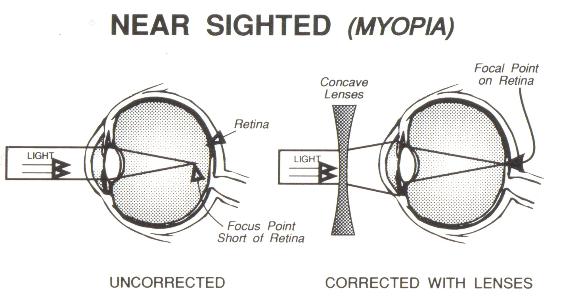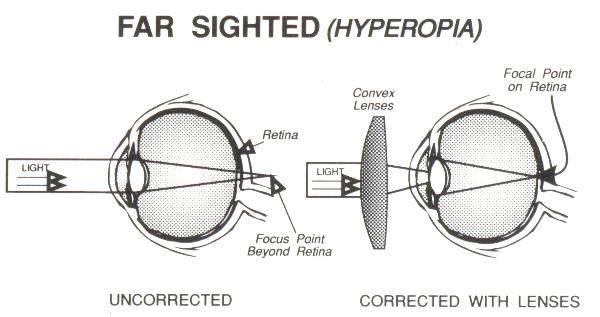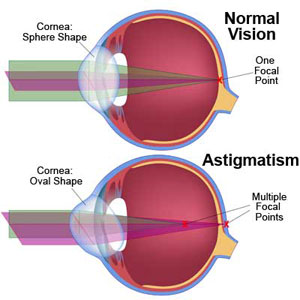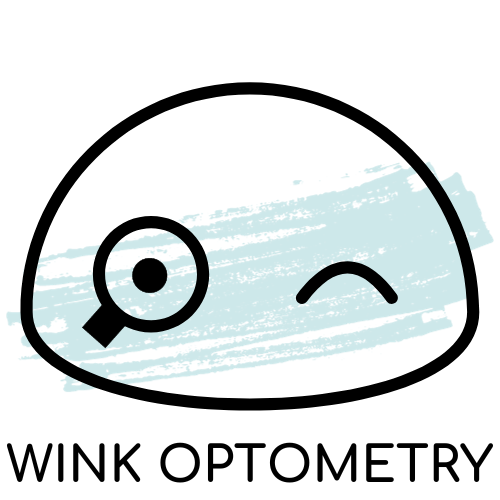For many of us, we go to see the optometrist to get a prescription for glasses. We do the “1 or 2” test and then we get some numbers printed out on a piece of paper we know to be our “glasses prescription”. But what do the numbers mean? Patients are often told you’re “far-sighted”, “near-sighted”, or you have a bit of “astigmatism” which mean respectively that you can see far better than near, near better than far, or your eye is “foot-ball shaped”. Rarely is the time ever taken to actually explain what these terms mean, why your correction is a plus or minus, and what it actually means.

To be “near-sighted” in technical terms would be myopic – or to be considered a myope. For these people, vision up-close is clearer than distance. The lenses to correct for this would be MINUS lenses because the eyes are technically too strong. For myopes, the natural point of focus is in front of the retina – the eye’s natural power is too high (too much plus) or the eye is too long, so the point of focus is too close. To correct for this, the lenses are MINUS to bring the natural point of focus back to the plane of the retina.

To be “far-sighted” in the optometry world means hyperopic – or to be a hyperope. For most of these individuals, you’re able to see far better than near depending on how high your prescription is. The natural point of focus is actually in virtual space behind the retina and the power is too low (minus power) or the eye is too short. The corrective glasses will be PLUS lenses to add focusing power to bring the natural point of focus back on to the retina. What it truly means to be far-sighted is that the eyes are naturally too weak – hyperopes requires MORE power to bring the point of focus to where it is clear. For low prescription hyperopes, the lens in the eye naturally is able to bring things far away and close up into focus when we are young and the muscles are capable. However, this means that our eye muscles are constantly working as hyperopes to bring things into focus far away and even more so up close. For high prescription hyperopes, corrective lenses are required because our natural lenses are not capable of focusing that much and it will put a lot of strain on our eyes without the corrective lenses. This way, our eyes are corrected for distance and only need to focus things in for near. Imagine being in a squatting position all day (bringing distance into focus) and then holding a lower squat for when we need to read – it’s not an easy task.

As we age, the lens inside our eyes weakens and every year we get older it is less and less capable, until we reach the point where it is no longer able to focus anything. This is called presbyopia – the natural aging of the lens inside our eyes. By the time we reach 40+, we start to notice it is harder to read things; especially if it is too close to our face or “our arms aren’t long enough” to pull things far enough back. Unfortunately it happens to all of us and there’s nothing we can do to prevent it from happening. This is when we will start to require reading glasses or and add power on our prescription, because our eyes are no longer able to do the focusing for us. For near-sighted people this is usually an easier transition because they can actually take their glasses off and use their natural point of focus to read since their glasses correct for their distance vision. Unfortunately for hyperopes this is not the case. Depending on the prescription, they will require a prescription for both near and distance. A lot of the time for low prescription hyperopes they are able to go without correction for most of their life until they hit the point where their muscles are no longer able to focus in their distance anymore. As their natural lens weakens, they will notice that their distance will become blurry and even more so for their near vision.

For people with astigmatism, all it really means is their eyes are not perfect circles and they are slightly “foot-ball shaped”. When light hits the front of their cornea (front surface of the eye), there are two different planes of power that cause the light to split into two different focus points in the back of the eye (they can be in front or behind the retina depending on how far- or near-sighted the individual is). To say that someone has a high astigmatism means that the two focus points are far apart and the opposite is true for low astigmatism (focus points are closer together). For someone with astigmatism to have sharp vision, they require both focus points to be brought to the same plane on the retina. For low astigmatism powers it is not as noticeable if both focus points are not corrected, but for high astigmatism powers it is quite blurry if only one focus point is corrected. Both myopes and hyperopes can have astigmatism.
Overall, all our prescription is, is how powerful or weak they naturally are and what we need to correct the disparity between where our eye naturally focuses light and where we need it to be. Glasses will provide the clearest vision because they are custom-made to the exact specifications of the optometrist. Where as contact lenses are pre-made products and the optometrist will prescribe the lens closest to our glasses prescription that is available.
At Wink Optometry, our goal is to always educate our patients about what their eyes need to fulfill their visual demands. Come visit us in Burnaby to learn more!


Pingback: Lenses, Lenses, and more Lenses – Wink Optometry
whoa1h this blog is great i love reading your posts. Keep up the great work! You know, a lot of people are looking around for this information, you can aid them greatly.